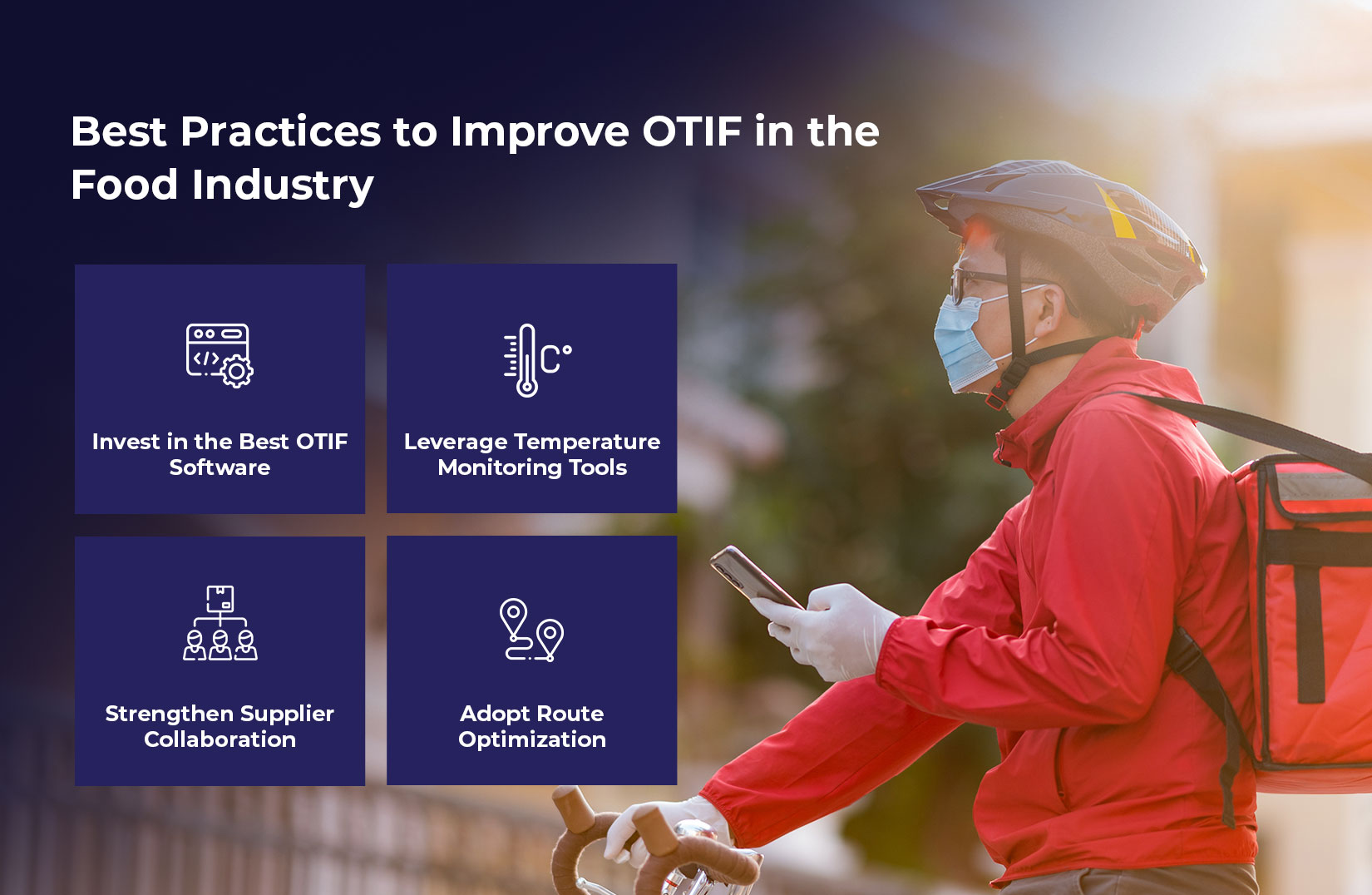
Fresh, Fast, and Full: Mastering OTIF in the Food Industry
In the food industry, where shelf life is limited and consumer expectations are high, delivering products On Time, In Full (OTIF) is more than a goal—it’s a necessity. It is a critical performance metric that ensures products are delivered precisely when and how they’re expected. Failing to meet the standards can lead to food waste, dissatisfied customers, and financial losses.
With global food supply chains growing increasingly complex, businesses are under pressure to improve their scores. This blog explores the importance of OTIF in the food industry, the challenges involved in managing perishables, and how the best OTIF software can optimize delivery performance.
Why OTIF Matters in the Food Industry
The consequences of poor performance are especially severe in the food industry due to the perishability of goods. Consider the following:
– Over $400 billion worth of food is lost annually due to inefficient supply chains (World Bank, 2022).
– A study by McKinsey shows that companies with higher OTIF rates enjoy better customer loyalty and fewer product returns.
For grocery retailers, food manufacturers, and distributors, ensuring a consistently high OTIF rate means:
– Reducing spoilage and waste.
– Improving forecasting and inventory management.
– Enhancing brand reliability and trust.
Key Challenges in Managing OTIF for Perishables

Despite its importance, achieving high OTIF in the food industry is challenging. Some of the common roadblocks include:
1. Tight Delivery Windows:
Perishable items need strict delivery windows to ensure freshness. Delays from traffic, breakdowns, or staffing issues can hurt OTIF performance, causing spoilage or stock rejection—even a few hours late can lead to significant losses.
2. Temperature Sensitivity:
Many food products, especially dairy, meat, and seafood, demand strict temperature control during transportation. A minor fluctuation in temperature can render an entire shipment unusable. If deliveries are made on time but the product quality is compromised, the “In Full” component of On time in fullis not met.
3. Demand Volatility:
Customer demand for perishables can fluctuate significantly due to weather, events, or seasonal trends. This unpredictability can cause mismatches in supply planning, making it harder to deliver complete orders on time.
4. Complex Distribution Networks:
Multiple stakeholders and handoffs in the food supply chain add complexity and increase the risk of miscommunication, delays, or errors—all of which can affect OTIF scores.
Best Practices to Improve OTIF in the Food Industry

Improving OTIF requires a coordinated effort across planning, operations, and technology. Here’s how businesses can tackle On Time In Full challenges effectively:
1. Invest in the Best OTIF Software:
Modern logistics platforms offer end-to-end visibility, crucial for the fast-paced food supply chain. The best software like one by LogiNext Solutions enables real-time tracking, automated updates, and AI-powered scheduling to prevent delays. Seamless integration with warehouse and transport systems ensures timely, accurate deliveries aligned with demand forecasts.
2. Leverage Temperature Monitoring Tools:
For perishable goods, temperature integrity is non-negotiable. IoT devices placed in transport vehicles provide live tracking of environmental conditions. These sensors help detect anomalies early—allowing for corrective action before goods spoil. Reliable temperature monitoring ensures that products arrive not only on time but in sellable condition, contributing to higher On Time, In Full compliance.
3. Strengthen Supplier Collaboration:
A strong On Time In Full score relies on upstream consistency. Building transparent relationships with suppliers helps align production and shipment schedules. Shared KPIs, collaborative platforms, and regular communication reduce uncertainties, prevent last-minute shortages, and foster proactive problem-solving.
4. Adopt Route Optimization:
AI-based route planning software reduces uncertainty in deliveries. It factors in live traffic, road closures, weather conditions, and delivery constraints to create efficient delivery paths. Re-routing capabilities help avoid delays, improving on-time delivery while conserving fuel and resources.
The Role of Analytics in OTIF Improvement
Data is central to improving On Time, In Full performance. The right analytics tools can help food businesses:
– Track On Time In Full by product, route, region, or carrier.
– Identify recurring causes for missed On Time In Full – such as vendor errors or carrier delays.
– Benchmark against industry standards.
According to a Deloitte survey, companies that use analytics to improve supply chain KPIs see a 5–10% increase in On Time In Full within the first year.
Real-World Example: OTIF Optimization in Action
A mid-sized dairy distributor in the U.S. faced regular OTIF failures—only 78% of orders met full compliance. By implementing an on time in full system integrated with route optimization and temperature monitoring, they were able to:
– Improve OTIF to 95% within 6 months.
– Reduce spoilage-related losses by 22%.
– Enhance customer satisfaction scores by 30%.
This case highlights how technology can be a game-changer for perishables logistics.
OTIF as a Competitive Advantage
In an industry where margins are thin and competition is fierce, delivering On Time, In Full isn’t just a logistics goal- it’s a brand promise. OTIF compliance builds retailer trust, reduces penalty charges, and safeguards product integrity.
Customers increasingly expect transparency and consistency. Businesses that leverage the best OTIF software to meet these expectations will stand out as reliable partners in the food supply chain.
Also Read: Decoding OTIF: Your Ultimate Guide to Flawless Logistics
Final Thoughts
Managing perishables in the food industry is a delicate balancing act. OTIF performance is one of the most accurate indicators of supply chain health. While the challenges are significant, the right mix of planning, collaboration, and technology- especially through an on time in full system- can turn OTIF into a core strength.
As the food supply chain evolves, companies that prioritize OTIF will not only minimize waste and costs but also build lasting relationships with their customers and partners.
72







@LogiNext